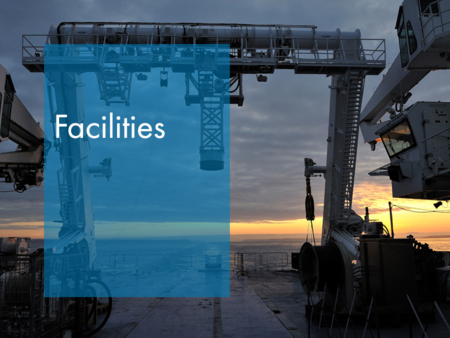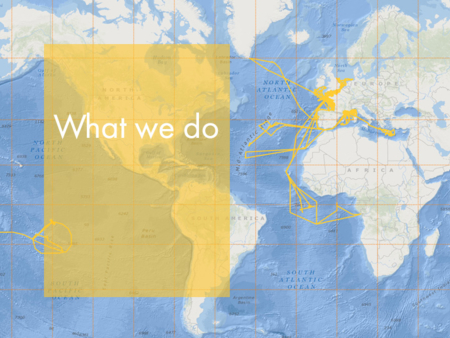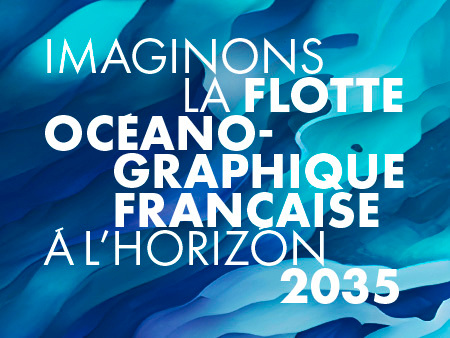- Length overall: 120.50 m
- Beam: 20.60 m
- Depth: 12.80 m
- Draught: 6.963 m
- Displacement: 10380 tonnes
- Cargo capacity: 2500 tonnes or 5600 m3
- Approximately 50 standard 20 ft containers
- Cold rooms and refrigerated containers
- Gross tonnage: 9403 UMS
- Net tonnage: 2820 UMS
- Classification: I 3/3 special vessel/replenishment vessel and oceanographic research vessel, ACA, AUT PORT, F, RMC-V, ALM (side gantry, stern crane, tandem double crane), ALS (stern gantry)
- Diesel capacity:
- Tank capacity: 1600 tonnes;
- Freight fuel (GO): 1000 CBM
- Range: 60 days at sea
- Crew: 48
- Scientists, technicians and hydrographers: 110 passengers
- Average operating speed during passages and cruises: 13.5 knots
- Freshwater ballast: 1100 tonnes
- Wastewater ballast: 488 tonnes
- Construction: Ateliers et Chantiers du Havre (delivered 12 May 1995)
- Owner: GIE MD II (TAAF and LDAS)
- Operator: Louis Dreyfus Austral Seas (LDAS)
- Charterers: France’s Antarctic Overseas Territories (TAAF) for logistics 120 days per year and IFREMER (Technopôle Brest Iroise, CS10070, 29280 Plouzané France) for oceanography 217 days per year.
- Flag: RIF
- Type: Replenishment vessel and oceanographic research vessel
- Call Sign: FNIN
- IMO number: 9050814
The Marion Dufresne can carry numerous containers and has a helideck.
- Environment
- Aanderaa weather station and an acoustic resonance anemometer
- 2 “clean” seawater systems supplying the laboratories
- 2 continuous measurement thermosalinographs, 2 RDI acoustic Doppler current profilers (ADCP)
- Geophysics
- Multibeam echo sounders, water column echo sounder and sub-bottom profiler
- Analogue probe line (3.5 kHz, 12 kHz, 18 kHz)
- Seaspy magnetometer
- LaCoste marine gravimeter
From 2020 the Marion Dufresne will be equipped and able to deploy seismic equipment, the Penfeld penetrometer and the Victor 6000 ROV.
The Marion Dufresne has a surface area of 650 m2 dedicated to scientific activities.
Of the ship’s nine decks, deck F is equipped with a Scientific Operations Room, IT rooms, a multipurpose laboratory and a conference room.
Deck E features scientific laboratories and the afterdeck.
An oceanographic hold is situated on deck C and an oceanographic store on deck D.
Heavy sampling integrated stern system (SIAMOIS)
- Windlass, 33 tonnes, compatible with aramid cables (50 tonnes)
- 3 cable reels, 7500 of large diameter cable (up to 30 mm)
- 2 gantries, 10 & 30 tonnes, long range of movement (astern and abeam)
- 3 handling winches, 2 cranes (18 tonnes and 3 tonnes), winches, telescopic booms
- Mobile platforms (20 ft) equipped with fishing winches and large diameter drums
- Various large samplers
- Dredges, etc.
Corers
- Giant round corer CALYPSO (10 tonnes – length 70 m) and its handling system: telescopic booms, integrated winches, platforms and telescopic supports
- Giant square corer CASQ (0.25 m2 x 12 m)
Light oceanology facilities starboard (ILOT system)
- 2 pulling windlasses, 4 tonnes (aramid compatible)
- 1 single Dyneema trailing cable for water-sediment interface coring (grab, multitubes, Boxcore, Waxcore)
- 1 steel electromechanical CTD cable
- 1 dedicated CTD cable, electromechanical textile
- Double gantry with large range of movement
- CTD room
Cranes
- 2 x 25-tonne fast cranes (40 tonnes in tandem)
- 1 x 18-tonne loading/oceanographic crane
- 1 x 3 tonne telescopic service crane
Auxiliary Craft
- 2 tenders
- 1 container-carrying barge, solely during TAAF charter
- Helicopter, solely during TAAF charter
Ethernet network: 200 sockets (1Gps) and WiFi cover in the work areas. Renewed in 2015.
Servers and data storage: VMWare virtualization, 50 TB of storage for scientific data. Renewed in 2018 and 2019.
Monitoring: SDI video monitor array connected to all the acquisition and operating stations.
- 3 satellite GPS (with SkyFix differential correction)
- Doppler log, gyrocompass, time server
- Inertial navigation system (PosMV320)
- Ultra-short baseline acoustic positioning system of underwater objects (Posidonia)
- Ship dynamic positioning (Albatross/Simrad)
The ship is fitted with diesel electric propulsion
- 3 diesel generators alternators, 8250 kW total
- Electric propulsion motors: 2 x 3000 kW
- 2 shaft lines
- 2 finned rudders
The ship also has a bow thruster (1 x 740 kW).
By IRIDIUM
By INMARSAT
By email




